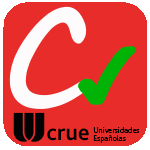Título
Design and fabrication of a novel 4D-printed customized hand orthosis to treat cerebral palsyFecha de publicación
2024Otras instituciones
Furtwangen University (Germany)Versión
Version publicadaTipo de documento
ArtículoArtículoIdioma
InglésDerechos
© 2023 IPEMAcceso
Acceso embargadoFin de la fecha de embargo
2144-12-31Versión de la editorial
https://doi.org/10.1016/j.medengphy.2023.104087Publicado en
Medical Engineering and Physics Vol. 123. N. art. 104087Editorial
ElsevierPalabras clave
Cerebral palsy4D-printing
Shape memory effects
Orthopedic treatment
Resumen
This research study is dedicated to additive manufacturing of the shape memory polymer hand orthosis to treat
patients with cerebral palsy. The treatment process for cerebral palsy is a step-by-step ... [+]
This research study is dedicated to additive manufacturing of the shape memory polymer hand orthosis to treat
patients with cerebral palsy. The treatment process for cerebral palsy is a step-by-step process that needs
different adjustments for the spastic hand to stretch it towards a normal posture, whereas meeting these requirements
using conventional methods or complicated mechanisms is expensive, less flexible, time-consuming,
and less practical. A comprehensive investigation was conducted to design and fabricate novel thermally actuated
customized hand orthosis via digital light processing (DLP). The highly precise scanning device was used to
derive the hand model, and subsequently, the Blender software was used to design the customized orthosis. The
results showed that fabricated orthosis could represent a strong potential to become an alternative treatment for
cerebral palsy. The shape memory actuation of the orthosis indicated that 100 % shape recovery is achievable in
different actuating conditions with recovery temperatures higher than 55◦C. Besides, it was found that the
response time and shape recovery percentage could be tailored in the range of 5 to 40 s and 45 to 100%,
respectively, by adjusting programming and actuation temperatures. Further, the repeatability of the shape
memory effects in the printed orthosis was investigated as well, which proved that until 17 repetitions, 100 %
shape recovery was achievable. [-]
Colecciones
- Artículos - Ingeniería [763]




















